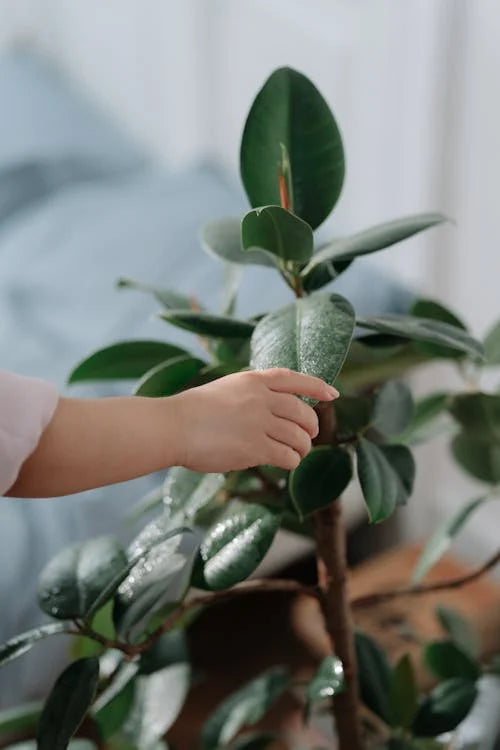
Care and maintenance of the Ficus Elastica
Share
The Ficus Elastica , better known as the Rubber Plant , is a versatile and popular houseplant. It is not only beautiful to look at, but also easy to maintain, making it a perfect choice for both beginners and experienced plant lovers. In this blog you will learn everything about care, such as watering, fertilizing, pruning and finding the right location.
Watering: balance is important
The Ficus Elastica likes a constant, but not too wet soil. Water when the top few centimeters of the soil feel dry. In the summer, the plant needs more water because of the warmer temperatures, while in the winter you can reduce the watering a bit. Be careful not to overwater; too wet soil can cause root rot.
Fertilization: food for growth
During the growing season, which runs from spring to autumn, you can fertilize the Ficus Elastica every month with a liquid houseplant food. Preferably choose a balanced fertilizer with equal amounts of nitrogen, phosphorus and potassium. In the winter, the plant does not need extra nutrition, because it grows less actively then.
Pruning: compact and healthy
The Rubber Plant can grow quickly, especially if it is in a well-lit spot. If you want to keep it a bit more compact, you can prune the tops. Use a sharp, clean pair of pruning shears and cut just above a leaf node. Pruning also stimulates new growth and ensures that the plant retains a nice, full shape.
The ideal location
The Ficus Elastica prefers a spot with a lot of indirect light. Direct sunlight can damage the leaves, but a spot that is too dark will slow down growth. A spot near a window facing east or west is often ideal. Avoid draughty places and ensure a stable room temperature between 18 and 24 degrees Celsius.
With the right care, the Ficus Elastica will grow into an impressive plant that will last for years. Its beautiful, glossy leaves add a touch of luxury to any room, and with a little attention it is guaranteed to become an eye-catcher in your interior.
